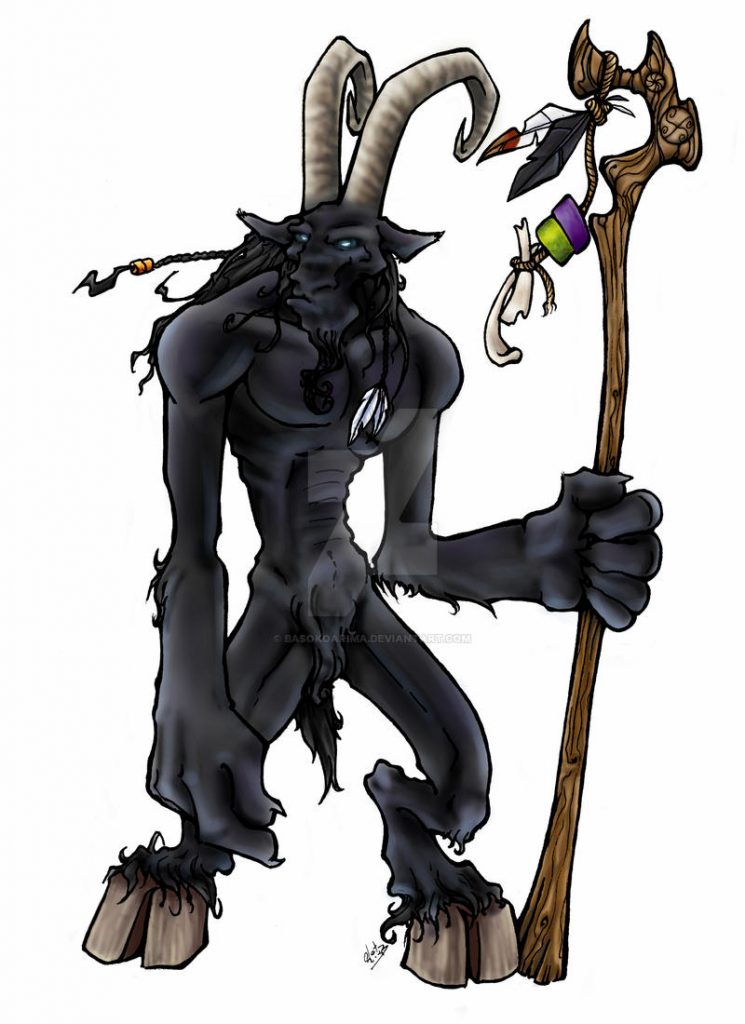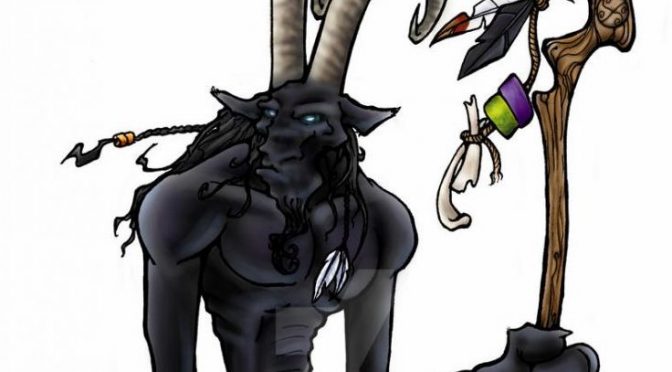Many of the figures in Basque mythology are shrouded in mystery, their true natures lost to the mists of time. Whatever role they played in the original Basque religion, their character became confused and contorted with the advent of Christianity. The black he-goat – the Akerbeltz – is a prime example. While he was originally viewed as good, a sign of fertility and health, he later became associated with Satan himself and became an iconic part of the Black Sabbaths celebrated by witches.

- While later black he-goats became associated with Satan and demonology, before that they were benign creatures with healing powers. Often associated with Mari, who could take the form of a black goat, black goats were prized. In many houses, as a way of avoiding disease in their cattle, people would ensure a black he-goat was part of the flock, raised in the stable.
- This benevolent akerbeltz was also a symbol of fertility and there is some speculation that he was related to the Greek god Pan. It was also believed that, if the right person cut a black he-goat’s beard, they could summon a hail storm.
- It wasn’t until the 16th and 17th centuries that the old pre-Christian beliefs began to become so strongly associated with evil, the devil, and demons. Pre-Christian beings such as Akerbeltz were directly associated with Satan and were said to be worshipped by witches and warlocks, at Black Sabbaths that, in Basque, are called Akelarreak. The importance of these gatherings is reflected in the fact that more than fifteen different places are named for the Akelarre — literally the he-goat’s pasture — where these celebrations were said to take place. In reality, it is unclear what happened at these gatherings — to the extent they happened at all — but it is certain that Basques were not worshipping the devil.
- In descriptions of the Akerbeltz from the akelarres or Black Sabbaths that the witches attended (often extracted from testimony under duress or torture), he is said to have the face of a man and sometimes two faces, one in the front and one on his back. He performs a reverse-mass, in mockery of the Catholic mass. These were said to end in an orgy in which human flesh was served.
- Akerbeltz as one of the deities the pre-Christian Basques worshipped is documented from pre-Roman times. In the Church of Saint-Aventin, in the Occitanie region of France, there is stone taken from a previous building, and inscribed upon it is the phrase Aherbeltse, which most translate to modern Akerbeltz (though some have connected the first element – aher – to the Basque word harri, or stone). This suggests that Akerbeltz is a very old figure in the Basque pantheon.
Primary sources: Akerbeltz, Wikipedia; Barandiaran Ayerbe, José Miguel de [et al.]. Akerbeltz. Enciclopedia Auñamendi, 2021. Available at: http://aunamendi.eusko-ikaskuntza.eus/es/akerbeltz/ar-7778/
Discover more from Buber's Basque Page
Subscribe to get the latest posts sent to your email.



Great research. Has anyone researched Basque involvement in vietnam? I’m sure many Basque fought and died there. I would be curious to learn where they were interred
Hi Gil, I assume you are referring to the Fighting Basque series, not this post specifically. At this point, the researchers are focused on WWII. I don’t know if they have plans to look at other wars or not.